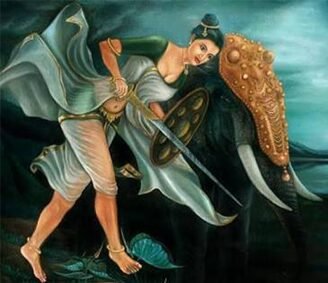Discover the Divine: Exploring the Spiritual Majesty of Mallikarjuna Jyotirlinga

In our trip to 12 Jyotirlingas, next in sequence is Mallikarjuna Jyotirlinga. Let us travel down south to experience the power of Shiva- Parvati as Arjuna and Mallika. Srisailam, also referred to as the “Kailash of the South,” is a revered and ancient site in Andra Pradesh, South India. Hundreds of temples and shrines honouring various deities can be found here. With one of the twelve jyotirlinga in India devoted to Lord Shiva, the Mallikarjuna Swami Jyotirlinga is one of the most well-known temples. Additionally, the temple is a Mahashakti Peetha.
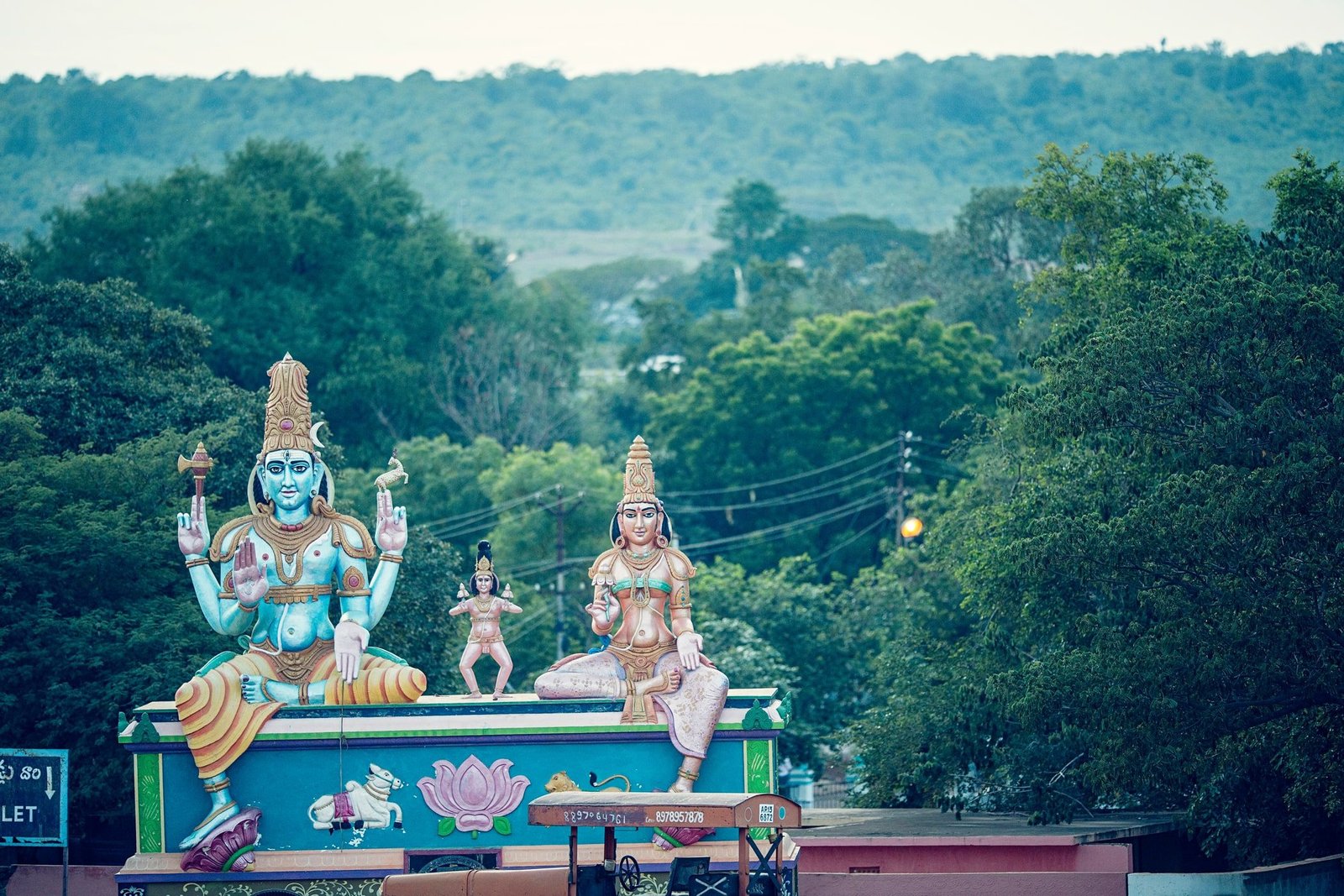
The name “Mallikarjuna” comes from the belief that Shiva and Parvati appeared here as Arjuna and Mallika. Situated in the Nallamallai Forest on the bank of the Krishna River, the temple is a perfect representation of traditional Dravidian architecture.
The nature of Shiva and Parvati’s two sons is revealed in a very insightful and fascinating story connected to the temple. It is thought that Shiva and Parvati considered their sons to get married at some point. An argument and rivalry arose between Ganesha and Kartikeya over who should get married first.
Shiva proposed that the person who completed a full circle of the globe could be the first to be married in order to resolve this disagreement. Upon hearing this, Kartikeya began his journey around the globe, while Ganesha made seven rounds around his parents. The Shastras mention that traveling around one’s parents in Pradakshinam is the same as traveling across the globe. Ganesha performed an act that impressed Lord Shiva, and as a result, the three great virtues of Buddhi (intellect), Siddhi (spiritual power), and Riddhi (prosperity) were married to him.
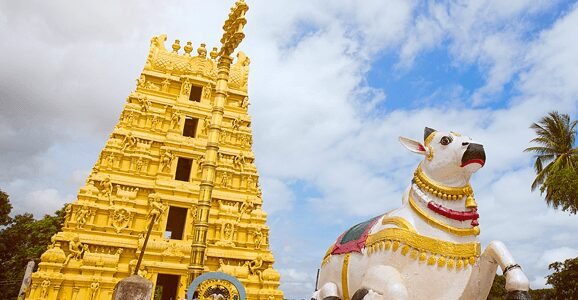
After returning, a furious Kartikeya left to live by himself on Mount Krauncha in Palani, assuming the name of Kumara brahmachari. He attempted to relocate after noticing his father approaching to console him, but later he stayed nearby at the Devas’ request. The name “Srisailam” originated from the place where Shiva and Parvati stayed.
According to Hindu mythology, the presiding deity, Mallikarjuna, was named after the jasmine flower, which is locally known as ‘Mallika’ in Telugu, which was used to worship the iconic form of Shiva, known as Linga.
Srisailam not only houses a Jyotirlinga, it even has one of the Maha Shakti Peetha in the same temple premise. The Puranic tradition attests to the ancient significance of Srisailam. The Mallikarjuna Swamy Lingam is the second of the 12 Jyotirlingas, and the Sri Bhramaramba Devi temple is the sixth of the 18 Maha Shakti Peethas. Given its significance, Srisailam is the only temple where two of these icons are housed within the same premises. Numerous other names for Srisailam exist, including Srigiri, Sirigiri, Sriparvatam, and Srinagam. Many Yogis, Rishis, Munis, preachers, spiritual teachers, kings, poets, and devotees from Kalyug have visited Srisailam and received the blessings of Sri Bhramarambika Devi and Mallikarjuna Swamy.
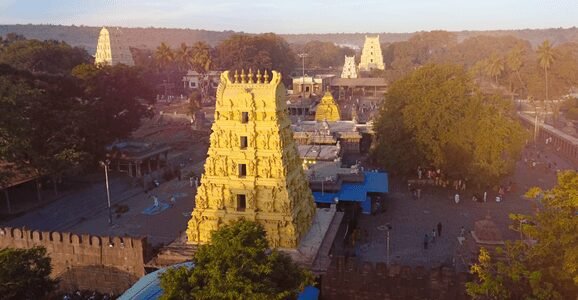
The Ramayana, Puranas, and other ancient texts give a detailed account of the temple’s magnificence. Several notable individuals have visited Srisailam, including Rishi Kumara, Agastya, Vashishta, Lopamudra, Vyasa Maharshi, Garga Maharshi, Durvasoma Maharshi, Manmadhudu, Shankaracharyulu, siddhis, and gurus; kings such as Sri Rama in Tretayuga, the Pandavas in Dwaparyuga, Asura icons like Ravana and Hiranyakashyap, and numerous acharyas such as the leader of Mantralaya, Raghavendra Swamy, Basaweshwara, Siddharamappa, Chakrapani Ranganatha, and the leader of Kanchikamakoti Peetam (Main Peetha set up by the great Ramanujacharya)-Chandrashekhara. Many Siddhis still descend to the hills of Srisailam from the Himalayas.
Some of the few interesting stories associated with Srisailam are:
- After thousands of years of intense Tapasya, Maharshi Siladha was granted his vision by Mahadeva, in the form of Nandi. He would have 2 sons- Nandi and Parvat. After great Sadhana, Nandi became Lord Shiva’s vehicle and Parvat became mount Kailasa on Earth. These 2 are called the truest of Shiva devotees. Nandi represents Dharma and that is why Nandi is placed in front of Shiva in all temples. This is to signify that Dharma lies in front of lord Shiva and Shiva is the God of Dharma. Shiva, armed with all his might, at Parvathi Devi’s request, set out to bless his devotees in the Earth’s centre, home to Vedas, Upasanakendra, Srisailam, in the same manner as he had blessed Nandi-Parvat and Siladha.
- Lord Shiva once entered an Arjuna tree which was encircled by Jasmine creeper. This came to be called Mallikarjuna Swamy. In Srisaila Khandam, Lord Shiva himself says that: “O Parvati, everyone knows I reside in the Kailasa, but when it comes to Earth, the only place that gives me happiness is Sri Hill.”

The Srisailam Sri Mallikarjuna Swamy Temple is also home to one the 18 Maha Shakti Peetha. The residing goddess is Bhramari or Bhramaramba. As a result of the legend of Daksha Yaga and Sati’s self-immolation, Shiva became a householder and Sri Parvati emerged in place of Sati Devi. The mythology explains how Shakti Peethas came to be. These are sacred places of Adiparashakti, created when Sati Devi’s body fell while Shiva was carrying it and wandering. It is thought that this is where Sati Devi’s upper lip fell.
According to Srisaila Khandam and Skanda Puranam, there are four major entrances and four subgateways leading off from Srisaila Mahakshetra in four directions. Tripuranthakam is the eastern entrance, Alampuram is the western entrance, Umamaheshwaram is the northern entrance, and Siddavatam is the southern entrance. Sub-gateways include Skandasomeshwaram on the Penna River, Eleshwaram on the Krishna River, Pushpagiri on the Uttarapinakini River, and Sangameshwaram in the Krishna District.

Spread across two hectares, the temple complex is home to four gopurams, or gateway towers. The most well-known of the temple’s many shrines are those of Mallikarjuna and Bhramaramba. Among the numerous halls within the temple complex is the Mukha Mandapa, which dates back to the Vijayanagar era. Oriented eastward, the temple is situated. There are multiple pillars supporting the enormous Nandikeshwara idol in the centre mandapam. The tall walls that enclose the temple are 183 meters (600 feet) by 152 meters (499 feet) and 8.5 meters (28 feet) high. In the precinct, there are several sculptures that rise above one another. The pillars in the Mukhamandapa, the hall that leads to the sanctum, are finely carved. The temple’s oldest shrine, which dates to the seventh century, is the one that houses Mallikarjuna. There are five other lingams that are thought to have been commissioned by the Pandavas, and a Sahasra Linga (1000 Linga) that is thought to have been commissioned by Rama. Nataraja images can be found in the first precinct’s mirror hall.
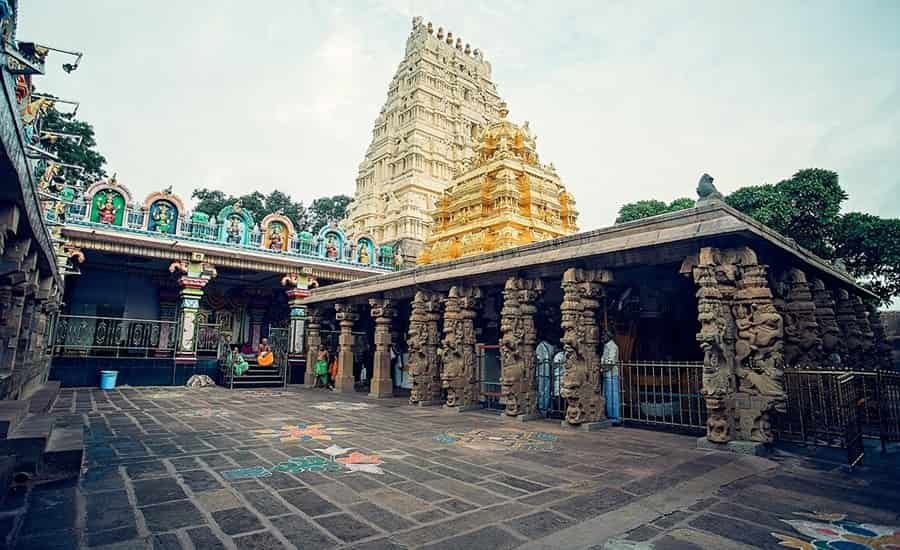
The oldest temple at Mallikarjuna Swamy Temple is the Rajarajeshwara-Rajarajeshwari Temple. Kubera is one of Lord Shiva’s (also called “Raja Raja”) strongest allies. Kubera is one of the Fourteen Upasakas. The Temple of Rajarajeshwara is located northeast of Mallikarjuna Swamy Temple, facing west with its sanctum sanctorum. Gaja Lakshmi Devi, in all her beauty, resides here in the temple’s sanctum sanctorum. This is the location of the Rajarajeshwara Lingam, which is meant to fully bless all devotees.
A trip to Srisailam surely can be ethereal for all the Shiva Bhaktas. Mahadeva with Mahashakti Devi in the same complex is rare. The astonishing Dravida architecture adds surreal beauty to the temple. Spirituality, History, and Architecture, all at one place. It is 180 kms from Kurnool and 250 Kms from Hyderabad. One can extend their trip and might as well visit Tirupati Temple which is 400 Kms from Srisailam.
